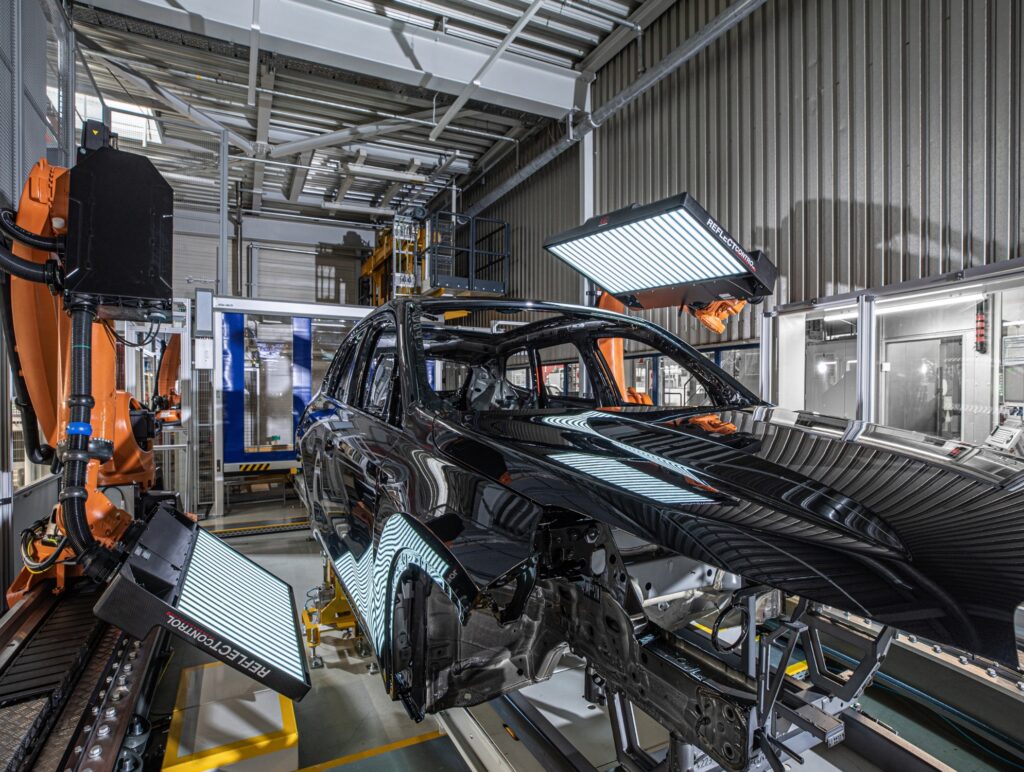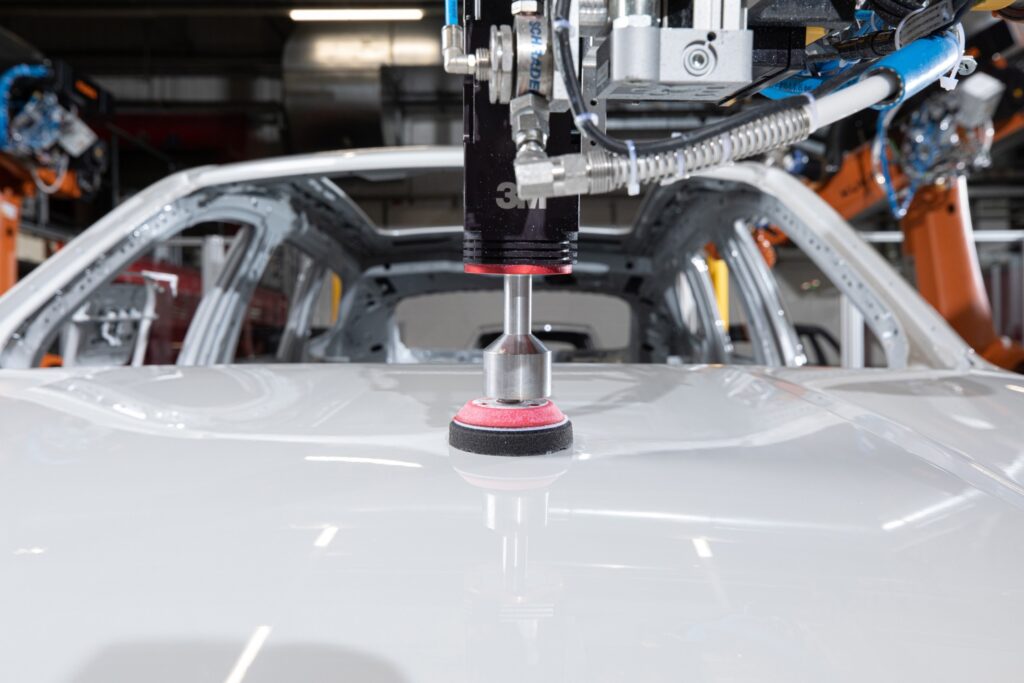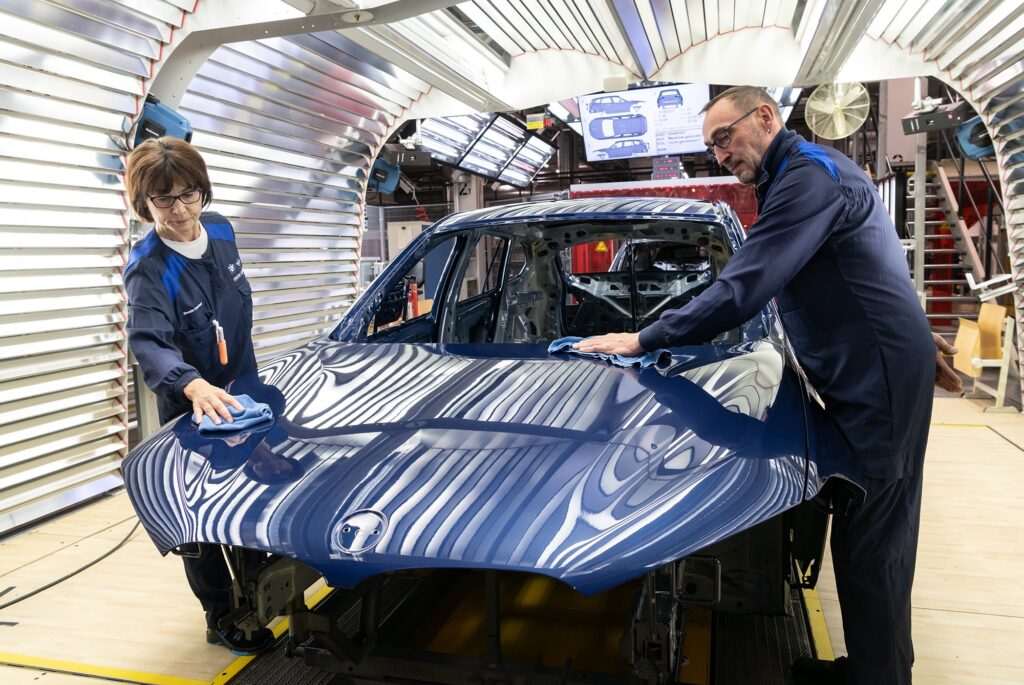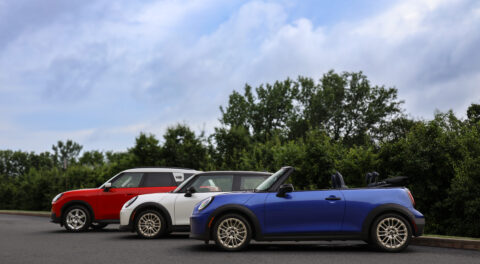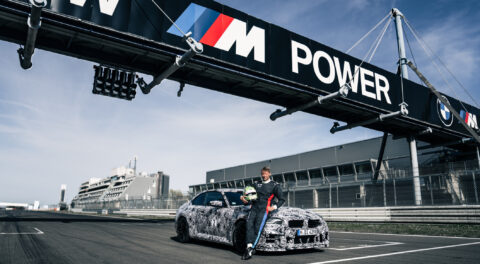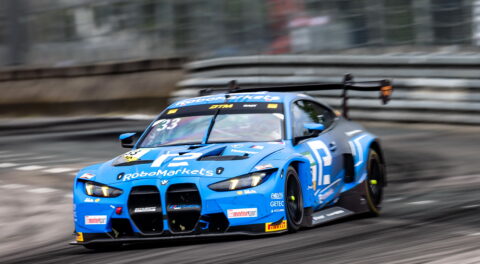BMW has employed a team of AI-driven robots to automate their in-house paint and finish correction processes at Plant Regensburg. If you listen closely, you can hear vehicle detailers around the world collectively say, “Oh, $#!%.”
The new process starts after the final topcoat is applied. Robots begin identifying and processing imperfections as BMW explains, “The system first uses deflectometry to identify deviating characteristics. While large monitors project black and white striped patterns onto the vehicle’s surface, cameras scan it and detect even the slightest variation in the reflective paintwork through the change in the striped pattern.” These variations and deviations are saved in the computer system for each vehicle being processed. The system is now fully automated as “the algorithm recognizes and objectively decides which features need post-processing,” explains project manager Daniel Poggensee, a structural planner for Surface Technology. The algorithm decides all! We will be assimilated.
Post-processing is where the robot detailers come in. BMW describes the painting, sanding, and polishing as a “well-rehearsed play” and sets the scene: “Four robots stand in the processing booth, surrounding a freshly painted body. As if on command, the robots begin working on the surface of the body. They sand it, apply the polishing compound, polish, change the attachments and switch out the sandpaper.”
Speaking of well-rehearsed plays, I took a stab at painting—pun intended—my own scene: The Automated Surface Processing (ASP) robot crew is hanging around the office water cooler (or charging station in this case), complaining about how the painting robots are pushing through too many imperfections. Probably because the Robotic Painting Process (RPP) robots were out late, blowing off steam and unwinding (their coils in this case) at a local bar in regard to the complications introduced by the BMW Individual two-tone paint available on the new i7 M70. Though, if you think about it, the ASPs only have jobs because the RPPs aren’t perfect. They should be thanking the RPPs, right?
Still with me after that sci-fi tangent? Good, because BMW has apparently already thought of my scenario. The imperfections detected during the Automated Surface Processing phase are uploaded to “the cloud”—all the cool kids are doing it—and used to perfect the painting process itself.
While much of the painting process has been automated, people are still involved as BMW explains, “there are limits to the use of robots. For example, they cannot process the edges of the body or the final millimeters next to the door and other joints. The fuel filler flap is also too fragile. For this reason, it is ultimately trained employees who add the finishing touches and conduct the final inspection of the body.”
Plant Regensburg is the first to use this new automated process, but BMW says it’s currently being rolled out to other plants. So, the next time you see a new BMW on the dealership floor, read the production plate and then inspect the paint. Where’d it come from? How’s it look? —Mike Bevels
[Photos by BMW.]


